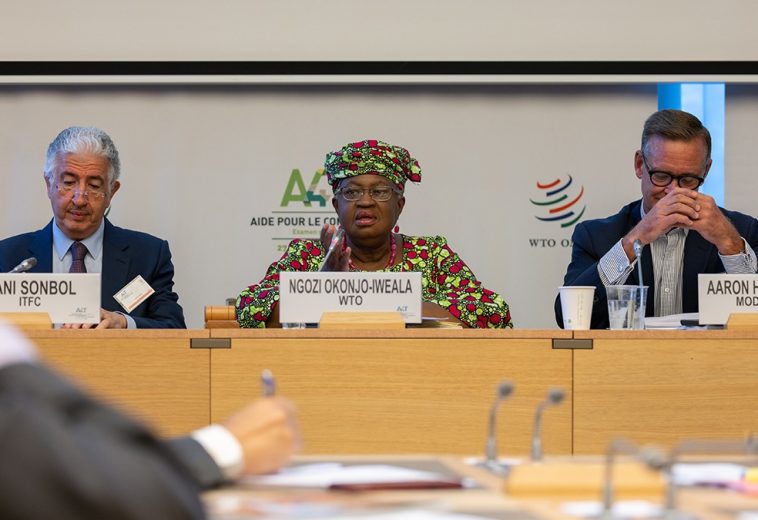The last few decades have seen Africa experience various challenges in food production and sustainability due to issues such as population growth, urban development, climate change, and other global challenges.
Rising to the occasion, governments on the continent have been working in collaboration with relevant agencies to ensure that the continent does not only attain a level of food security but also has measures in place to sustain it and lead to the realisation of Sustainable Development Goal 2, which seeks to create a world free of hunger by 2030.
This article will take you through some of the laudable initiatives to enhance food production as well as efforts to boost the overall agricultural value chain on the continent and see to the attainment of Goal 2 by 2030.
The SDG 2
Food is a basic necessity that is essential to the existence of life; little wonder that “end hunger, achieve food security, improve overnutrition, and promote sustainable agriculture” comes as number 2 on the 17 Sustainable Development Goals, or SDGs, outlined by the United Nations that must be attained by 2030 to make the world a better place.
With just a little over 7 years until the 2030 target of achieving the SDGs, Africa lags and seems to be far from attaining goal 2.
Going by the data from the recently released 2023 edition of the State of Food Security and Nutrition in the World report (SOFI 2023) by the Food and Agriculture Organisation of the UN (FAO) and its partners, one in five people in Africa face hunger, which is more than twice the global average.
As bitter as this truth may sound, it only shows that Africa still has a lot of work to do in the area of food security and sustainability; hence, the leaders must rise to this challenge urgently.
What is Africa doing?
Achieving SDG 2 in countries of Africa has a lot to do with improving the agriculture sector to enhance production, but while there is a common goal for all nations on the continent, there have been diverse approaches towards achieving the goal just as many as the nations themselves.
This is so as many African countries in recent times have faced one issue or another in terms of food security, which has brought about different urgent measures depending on the country.
Let’s take Nigeria. The country has taken giant steps to introduce some agricultural policies in the last few years that have brought about notable changes in food production.
Some of these programmes include the Anchor Borrowers Programme, which has disbursed a total of N1.09 trillion as of March 2023 to smallholder farmers to boost production of key commodities, stabilise input supply to agro-processors, and also tackle food insecurity in the country.
About 4.6 million small farmers have benefited from the programme, which has seen food production improve and even brought about more success in the area of rice production in Nigeria.
Another strategic initiative is the Presidential Fertiliser Initiative (PFI), which is a partnership between Nigeria and Morocco for fertiliser farmers. Through this platform, many farmers have been supported to plant more and improve their production to increase the food supply chain.
Elsewhere in Rwanda, the government has adopted climate-smart agriculture to address the effects of climate change and still enhance productivity. This became important given the adverse effects of climate change on doos production.
Under the smart agriculture policy, the government of Rwanda, with support from development partners, commenced a $113.3 million project that aims to enhance hillside agriculture’s resilience to climate change and variability through increased productivity and income.
The country also has the Crop Intensification Programme, which has helped increase access to land, farm inputs, extension services, markets, and supply chains and led to the country’s commercialization of smallholder agriculture.
With that, agriculture in Rwanda is gradually transforming from subsistence farming to a market-oriented, value-added food chain, which also contributes hugely to national food security.
In other countries on the continent, several efforts have been put into ensuring the availability and sustenance of food, either directly through government initiatives or indirectly through government-sponsored programmes and start-ups that are coming up with innovations that create solutions to some of the challenges faced by farmers.
For instance, in South Africa, with the adoption of Smart agriculture, a good percentage of farmers are being equipped to use technology to improve weather forecasting, maximise water and other resources, and automate machinery and production processes, all to ensure food security across the country.
Contributions of the AfDB and others to boosting agriculture in Africa
It has been emphasised several times that the government alone cannot restructure the continent’s agricultural sector to what it should be, hence the collaborations and support from development agencies.
One strategic partner the African continent is blessed with in this regard is the African Development Bank, or AfDB.
In 2017, the bank provided a roadmap to developing agriculture on the continent with a plan to inject about 2.4 billion dollars annually for 10 years to build roads, irrigation, infrastructure, and storage facilities to attract investors to the sector.
The AfDB also provides financial guarantees to smallholder farmers to help them access inputs and grow their produce.
Earlier this year, the bank specifically committed to investing another $10 billion over the next five years to boost Africa’s efforts at ending hunger and attaining self-sufficiency in food production.
In terms of ending hunger, the bank also has the Technology for African Agricultural Transformation programme ongoing as part of its Feed Africa Strategy of 2016–2025.
Another transformative initiative of the bank that helped avert a potential food crisis following the Russia-Ukraine crisis in 2022 was a $1.5 billion emergency food production facility.
Several support projects are either underway or also being prepared for implementation by the bank or with its supporting partners to ensure Africa gets it right in agriculture; therefore, we can say that the AfDB has been a strong ally of the continent.
Alliance for a Green Revolution in Africa, AGRA
AGRA is also doing tremendously well in supporting Africa to improve agriculture, especially in the area of climate-adaptive agriculture. It introduced the private sector’s village-based agricultural advisor engagement, which has helped to reduce post-harvest losses by about 30 percent in some African countries such as Mali, Mozambique, and Nigeria.
In East Africa, it has partnered with the Common Market for Eastern and Southern Africa (COMESA) to build the Regional Food Balance Sheet needed to get accurate data for effective food and nutrition policies, while in the Southern Africa region, AGRA formed the Chinyanja Triangle Soybean Trade Initiative that linked smallholder farmers to regional trade markets and gave them a more competitive edge.
It is still not prevented, as there are several projects ongoing on the continent.
The Food and Agricultural Organisation (FAO
The UN organisation has been deliberate about agriculture and has worked individually and in partnership with other agencies to help Africa tackle hunger and boost agriculture in general.
Among other things, the FAO worked some years ago with the African Union to launch a framework, “Sustainable Agricultural Mechanisation: A Framework for Africa,” targeted at boosting agricultural efficiency and developing strategies towards sustainable mechanisation of agriculture in all countries.
While all its projects have not been realised across the board, implementation is ongoing in some countries.
In other areas, the FAO uses its resources and mobilises financial support from bilateral donors to implement various agricultural programmes across Africa.
Programmes by the organisation across nations of Africa include technical development, emergency response, and advice on crop development, while it also spearheads the introduction of new plans and technologies in agriculture that get adopted by the government.
Moving On
Though much is being done, Africa needs more urgent measures for the transformation of the agricultural sector to take it from just being able to produce to sustainability because the key to protecting the future is sustainability in agriculture.
To get to the level of sustainability, it is important that African countries take the driver’s seat, prioritise issues of agriculture, and also show more political and moral will to make headway.


